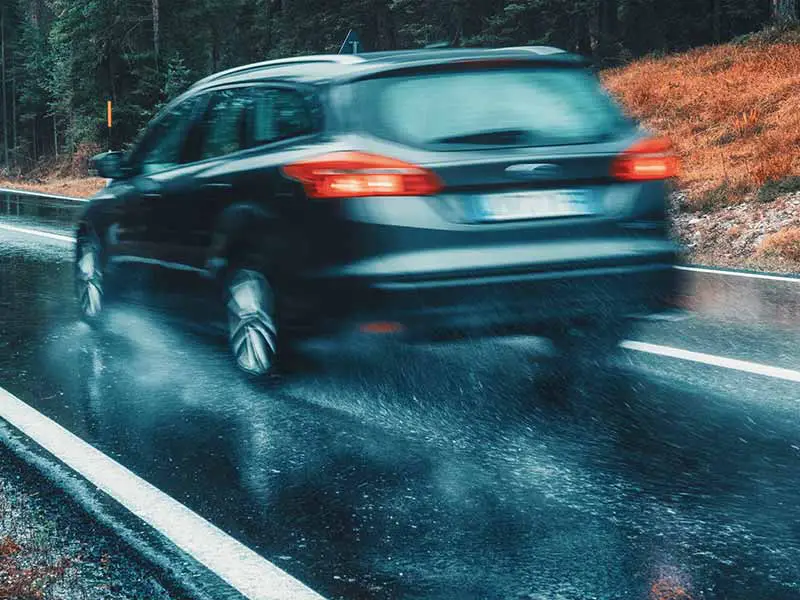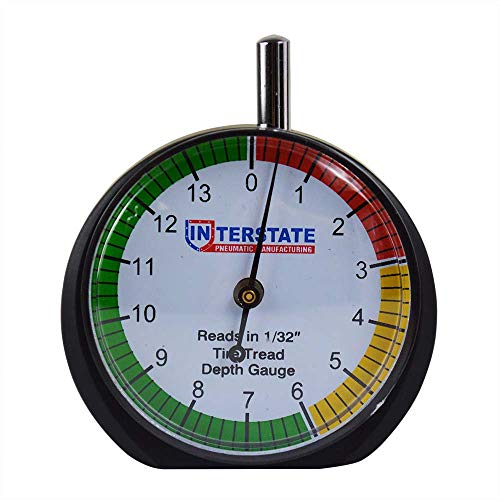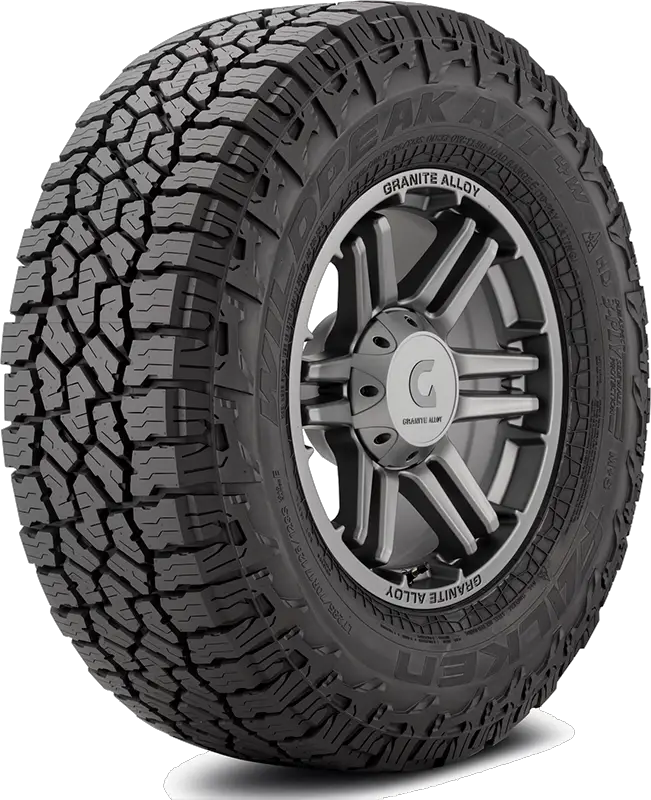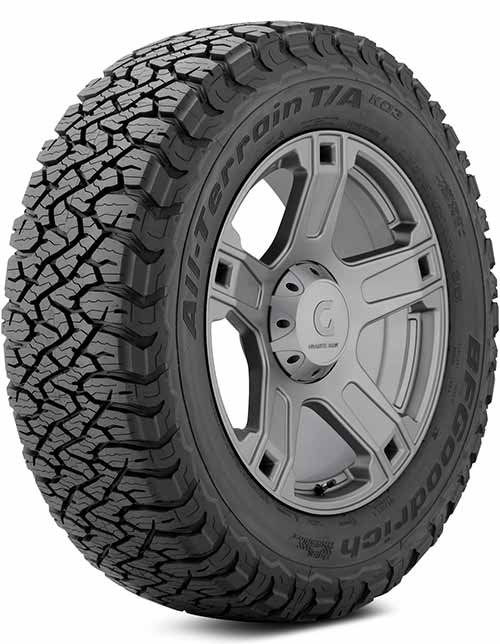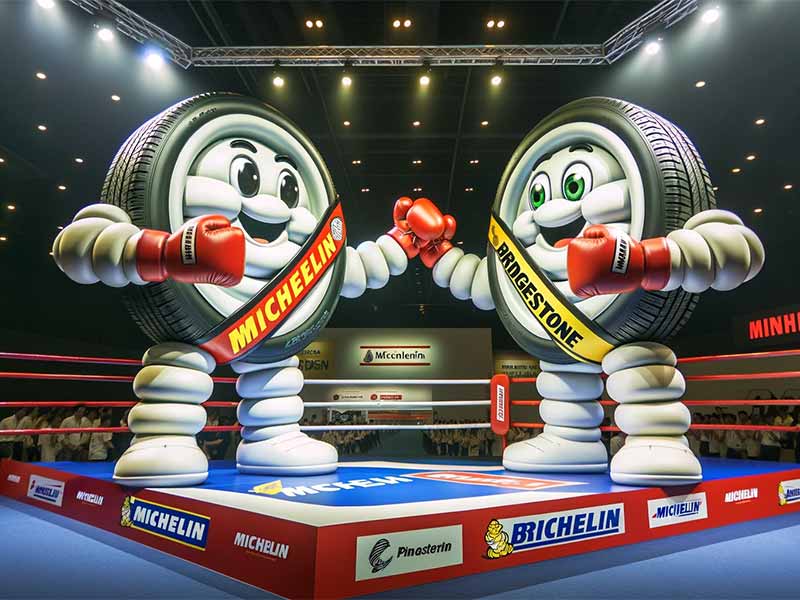Tread wear depth is critical to safe driving and dictates when you should have your tires replaced. 2/32″ of tread depth is the legal limit, but this isn’t necessarily the smartest depth to reach.
You can save a few dollars by waiting as long as possible, but your safety dramatically reduces the longer you wait.
Tread Depth To Replace Tires
The minimum tread depth to replace tires is 2/32″. This is the legal limit and is not capable of properly moving water out from under your tires efficiently.
3/32″ is a better time to replace a tire. This allows for a bit of safety margin and has significantly better wet performance.
4/32″ is also a reasonable time to replace a tire. More conservative drivers or those that deal with rain and standing water more often may consider this tire tread depth more ideal.
To make an informed decision you need to properly understand how your tire tread works and what the effects of procrastinating are on your safety.
Let’s take a closer look.
Importance Of Proper Tread Depth
To properly explain when the tread depth is too low, we need to briefly cover why tread depth is important and how it works.
As tires wear, their performance slowly decreases. Every little bit of tread wear reduces their ability to properly grip the road surface in an emergency situation.
Your tire’s tread is ultimately all about performance in bad weather – primarily rainy conditions. The tread groove is designed to funnel water out and away from underneath the tire tread so it can properly grip the pavement.
The less tread depth there is, the less ability the tire’s tread has to channel water out and away, and the more difficult it will be for the tire tread to provide traction.
Wet Weather Stopping Distance
Wet roads can significantly reduce the ability of your car or truck to come to a complete stop before reaching objects in your path, such as other vehicles on the road.
Your tire tread depth can make a significant difference in the stopping distance. The deeper the tread groove is, the more easily water can flow away from the contact patch and allow the tread blocks to remain in contact with the roadway.
Braking distances increase dramatically as your tread wears down. Worn tires that are between 4/32″ and 2/32″ of tread depth can take twice the distance to come to a complete stop.
Hydroplaning
Hydroplaning is when water interferes with the ability of your tire tread to maintain traction with the road surface. The tires will actually no longer be in physical contact with the pavement as your vehicle glides on a cushion of water.
Hydroplaning can occur even with new tires if you’re traveling fast enough with significant amounts of water on the road. But having more tread depth will help greatly reduce the chances of your car or truck hydroplaning.
5/32″ Tire Tread Depth
At 5/32″ of tread depth, your tires will have lost approximately half of their tread depths. This level is still considered acceptable but is coming close to what is considered a low tread depth.
Tire performance on wet roads will be significantly worse than on new tires, but it is still considered safe for driving in wet conditions.
4/32″ Tire Tread Depth
At 4/32″ of tread depth, your tires have now officially entered the caution area. More conservative drivers, especially those that often deal with standing water and rainy weather, may consider replacing tires now.
Many drivers will continue to use tires with these lower tread depths to squeeze a little more value out of them before spending money on a set of new tires.

3/32″ Tire Tread Depth
At 3/32″ of tread depth, your tires are well into the caution area and halfway to being legally considered bald and in need of immediate replacement.
Most vehicle owners should strongly consider getting their tires replaced at this point. While not yet legally necessary, this level of tread wear allows for very little water to flow out and away from under the tire’s tread.
If you’re concerned about safe driving at all, now is the time to have your worn-out set of tires replaced.
2/32″ Tire Tread Depth – Minimum Tire Tread Depth
At 2/32″ of tread depth, your tires are legally considered bald and require replacing.
This is not enough depth to reasonably prevent hydroplaning and stopping distances on wet road surfaces will be dramatically long and extremely dangerous.

Winter Tires Minimum Tread Depth
The minimum tread depth for winter tires is much more than normal all-season tires or summer tires. 6/32″ or 5/32″ are commonly considered the bare minimum that is safe for winter driving conditions, such as snow and slush, with winter tires.
Winter driving conditions require a deeper tread depth to provide adequate traction since snow and slush don’t flow out from under your tire tread like water can.
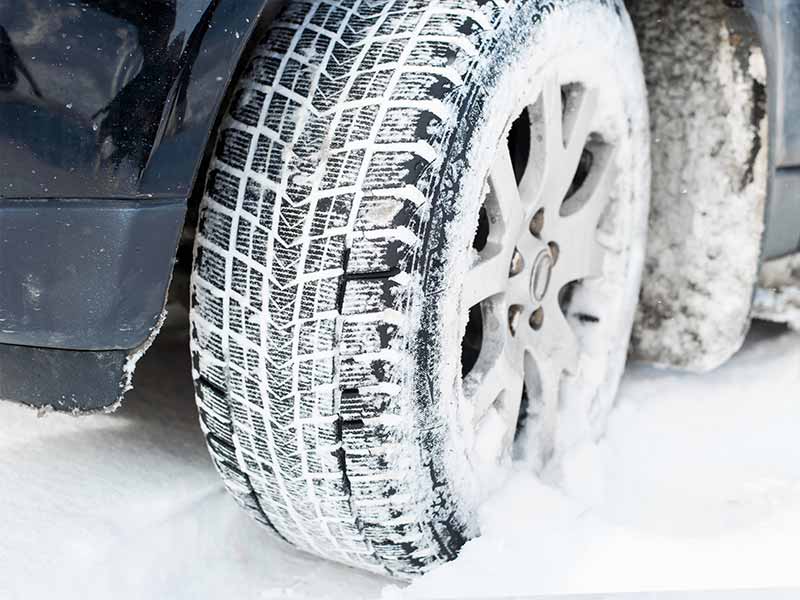
How To Check Your Tire Tread Depth
Since tires wear down gradually and their performance also degrades gradually as your tires wear, it can be hard to recognize how much wet-traction performance you’ve actually lost.
It’s important to keep an eye on your tires. As your tire tread wears down you slowly lose traction in wet weather conditions. Knowing your tread wear levels is an important safety consideration.
Let’s briefly cover the common methods for how to measure tread depth.
Tire Tread Depth Gauge
The most accurate method to measure tread depth is to use a tire tread depth gauge. This isn’t the only reasonable method to get a good idea of the depth of your remaining tread wear though.
Tread depth gauges work by placing them in the tread groove and measuring the distance from the bottom of the groove to the top of the worn tread block.
There are different types of tread depth gauges on the market, although most of them are extremely simple to use and have about the same level of accuracy. The key differentiator that makes a tread depth gauge better is how easy it is to read the measurements.
Penny Test
A common alternative that is far more convenient is to use the Penny Test. Since it’s usually fairly easy to find a penny and Abraham Lincoln’s head has remained the same over many years, we can use distinct features of his head as reference points.
To measure your tire’s tread with a penny, insert the penny in the tread groove with Lincoln’s head upside down.
If the top of the tread doesn’t touch his head, you should have your tire replaced.
If the top of the tread doesn’t touch his forehead, you should replace your tire as soon as possible.
If the top of the tread touches his forehead, you have plenty of tread wear left to not need to worry for a while.
Wear Bars
Most tires will have tread wear indicator bars, also known more commonly as wear bars, between tread ribs at the bottom of the tread groove.
These slightly raised bars are exactly 2/32″ above the bottom of the groove and are designed to indicate when your tires must be replaced.
When the tread wear indicator has been reached, your tires are essentially bald, and driving in rainy weather or on wet roads would be extremely dangerous.
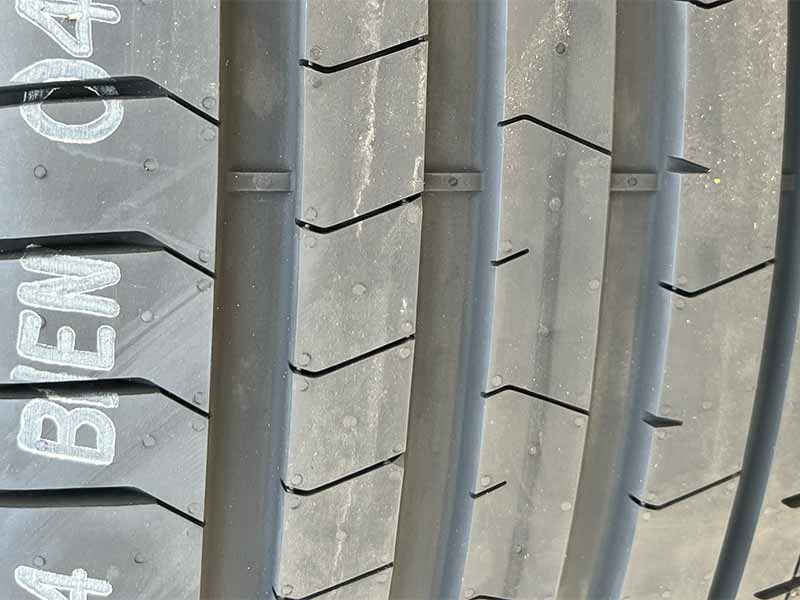
Uneven Tread Wear
Uneven tread wear is a problem that will rapidly cause your tires to need to be replaced. Uneven wear patterns are usually a sign of wheel misalignment or improper inflation.
To help ensure consistent wear across the entire surface of your tire width you should follow some key tire maintenance practices.
- Maintain proper air pressure in all four tires by checking monthly the pressures match those listed on the tire information sticker in the driver’s door jamb or owner’s manual.
- Have your tires rotated every 5,000 miles.
- Have your tires rebalanced and a wheel alignment performed every 10,000 miles.
Tread Depth Of New Tires
New tires will typically have 10/32″ to 11/32″ of tire tread available when purchased. The rate at which new tires will wear down varies greatly depending on the rubber compound, type of vehicle being used, and the driving style of the vehicle owner.
Resources
Below are some links you may find helpful when learning about tires
- What honest Abe doesn’t tell you about minimum tread depths – Tire Rack
- When to replace your tires – Consumer Reports
Final Thoughts
Ultimately, the best depth to replace a tire depends on your acceptable safety level. The minimum legal depth is actually quite dangerous and should be avoided in my opinion.
Replacing your tires with only an extra 1/32″ of tread on them can make quite a large difference in stopping distances and the chance of hydroplaning.
The cost savings is relatively insignificant when compared to the Russian Roulette scenario you place yourself in when pushing to extremely lower tread depths.
Spending a few minutes watching some of the videos posted to r/IdiotsInCars should be all you need to realize that it’s smart to replace your tires earlier than the minimum depth allowable.
Even the best driver can’t account for the unexpected.
Good luck and happy motoring.
